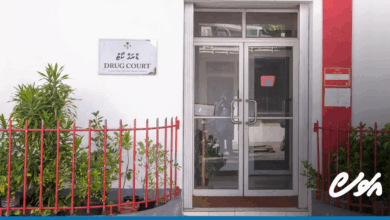a year of progress amid challenges

President Dr. Mohamed Muizzu’s administration marks its first anniversary today. Throughout this journey thus far, there is no doubt that the government has faced several challenges and predicaments, and there are still several difficult obstacles to maneuver and overcome. However, despite these challenges, the government has shown awareness of these difficulties and has begun taking steps to address them. One of the most daunting challenges the government faces is the task of managing the nation’s mounting public debt.
When the ruling Peoples National Congress (PNC)assumed power in November 2023, the Maldives was on the brink of financial collapse. On the last day of President Ibrahim Mohamed Solih’s administration, the country’s debt figures for the third quarter of that year were released. As of that date, the total debt stood at MVR 118.89 billion, with MVR 67.9 as domestic debt and external debt at MVR 49.6 billion.
By the end of 2023, debt had soared to MVR 124.23 billion, with domestic and external debt increasing to MVR 73.1 billion and MVR 51.2 billion, respectively.

Comparing these figures with the previous administrations’ performances, the country’s debt stood at MVR 59.5 billion in 2018, when former President Abdullah Yameen’s administration ended and former President Ibrahim Mohamed Solih’s administration began. But by the end of President Solih’s administration in 2023, the country’s debt more than doubled, soaring to MVR 124.23.
According to these figures, the government debt increased by MVR 64 billion during the government of President Solih alone. The increase is about MVR 5 billion more than the total debt accumulated by all prior administrations combined.
We share these statistics to give you an idea of the enormity of the debt problem President Dr. Muizzu’s government now faces, the immense burden the weight of this debt poses on the current administration. The current state of the country’s debt is such that MVR 23 out of every MVR 100 of revenue generated, or about one-fourth of the revenue is spent on debt repayment.

While the government is already facing serious difficulties in repaying its debt, a critical hurdle looms in 2026. That year alone, the state will have to make a one-time lump repayment of US$ 1 billion, or MVR 15.4 billion. This repayment obligation does not stem from a loan taken by President Muizzu’s government or an expenditure incurred by the current government. On the contrary, this is the amount to be paid for the debt created by the previous presidents, primarily President Solih.
President Dr. Muizzu’s government is now gearing up to implement cost-cutting measures in different sectors to navigate these challenges. One of these measures includes revising the Aasandha insurance scheme and the issuance of subsidies in such a way that they primarily benefit those in genuine need. Some tourism-related taxes have been increased to increase revenue while also ensuring that they do not significantly affect the people. The central bank, Maldives Monetary Authority (MMA) has also begun to address the dollar shortage by requiring tourism establishments to deposit and convert a certain percentage of their dollar revenue at local banks.

When President Dr. Muizzu’s administration inherited nearly empty reserves, official reserves stood at $615 million at the end of October this year. The government has also opened its first development bank in the Maldives on Saturday, just a day shy of the government’s first anniversary. This is a key initiative aligned with President Dr. Muizzu’s vision to drive national progress.
Despite the challenges facing the Maldives, independent economists believe the government’s measures to improve the economy will yield positive results. While the road ahead remains challenging, the measures implemented thus far suggest that the government is on the right track to improve the economy.





